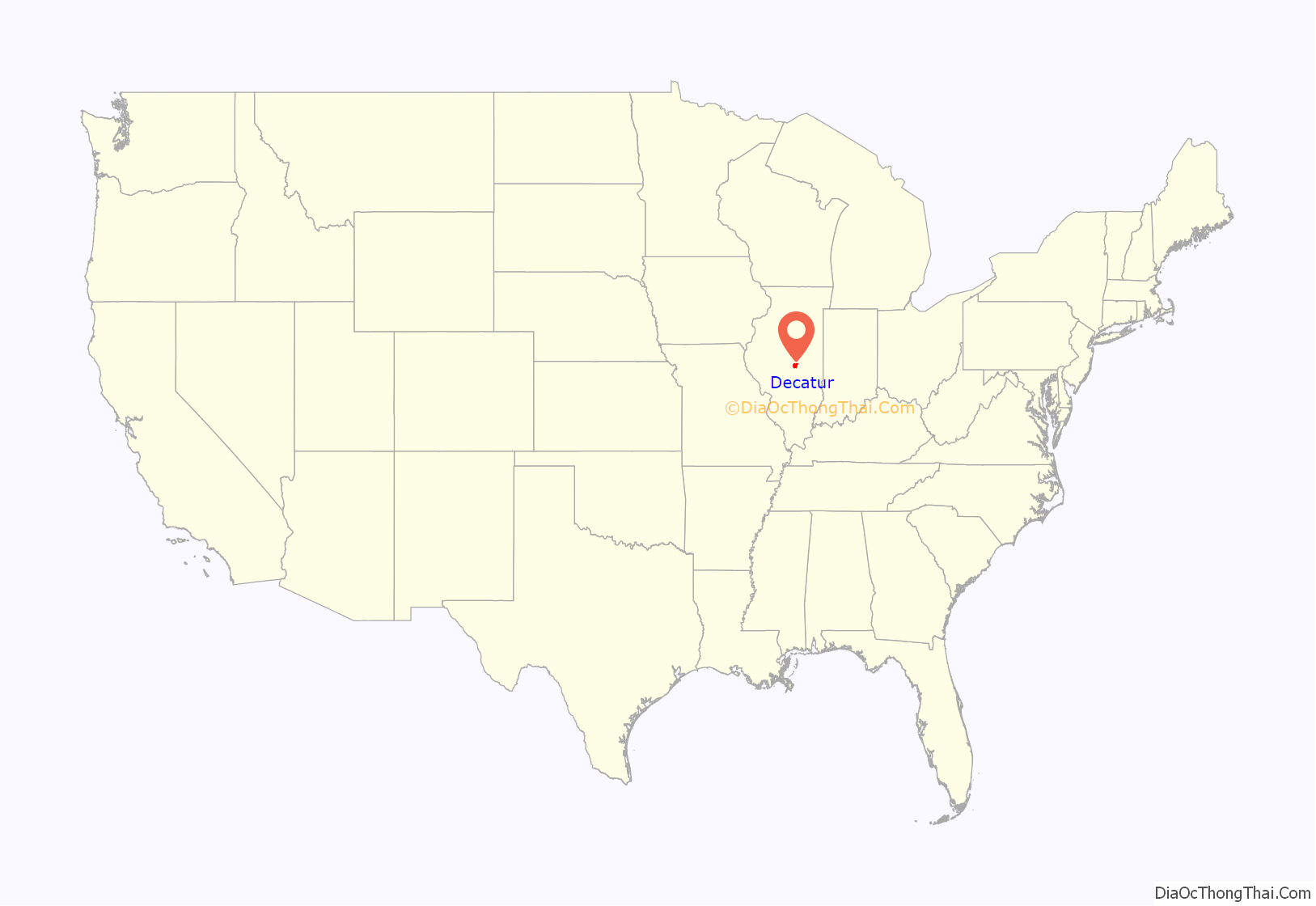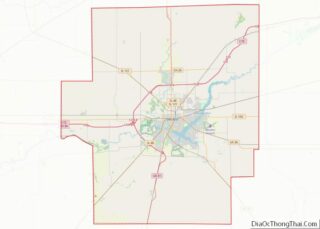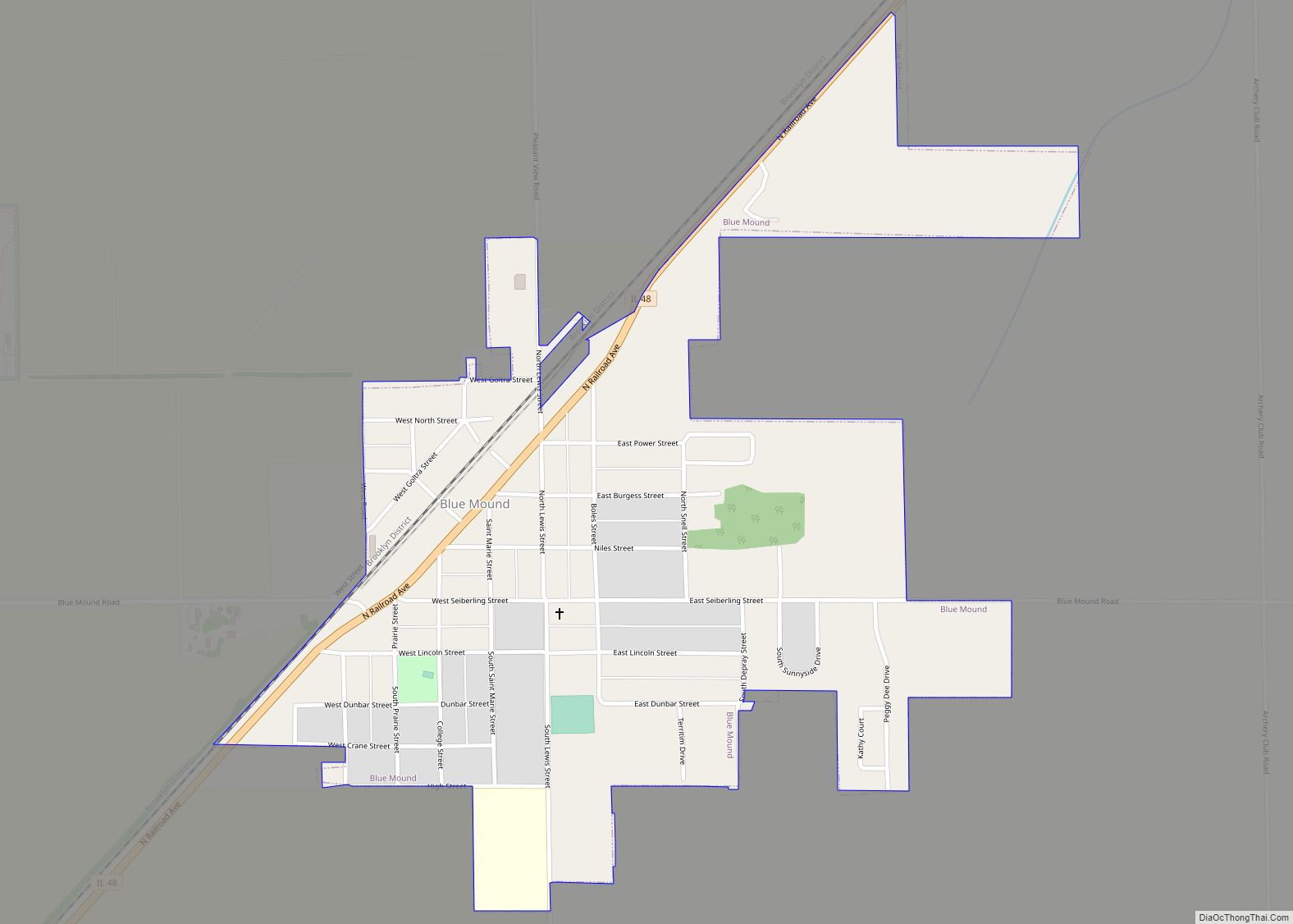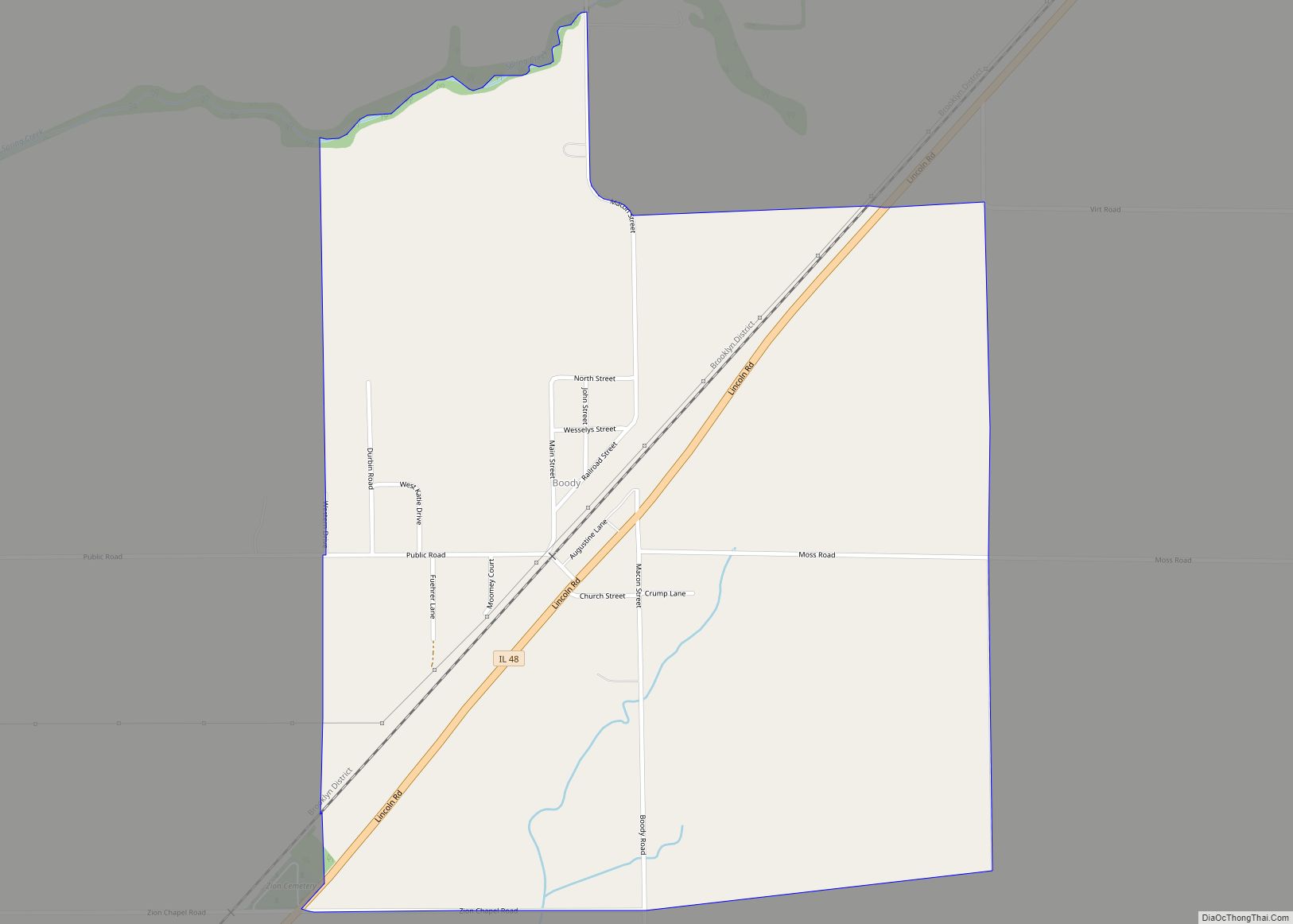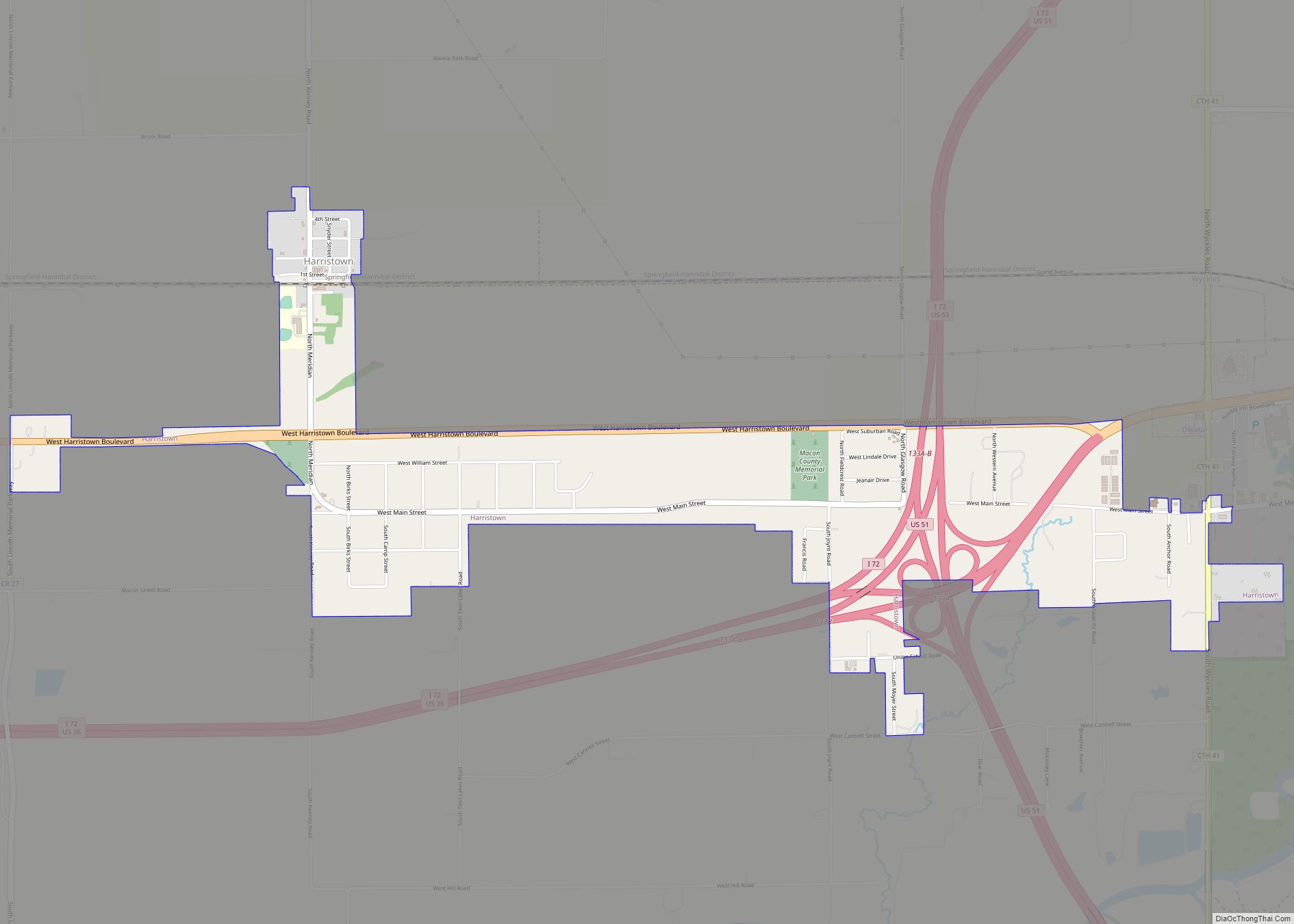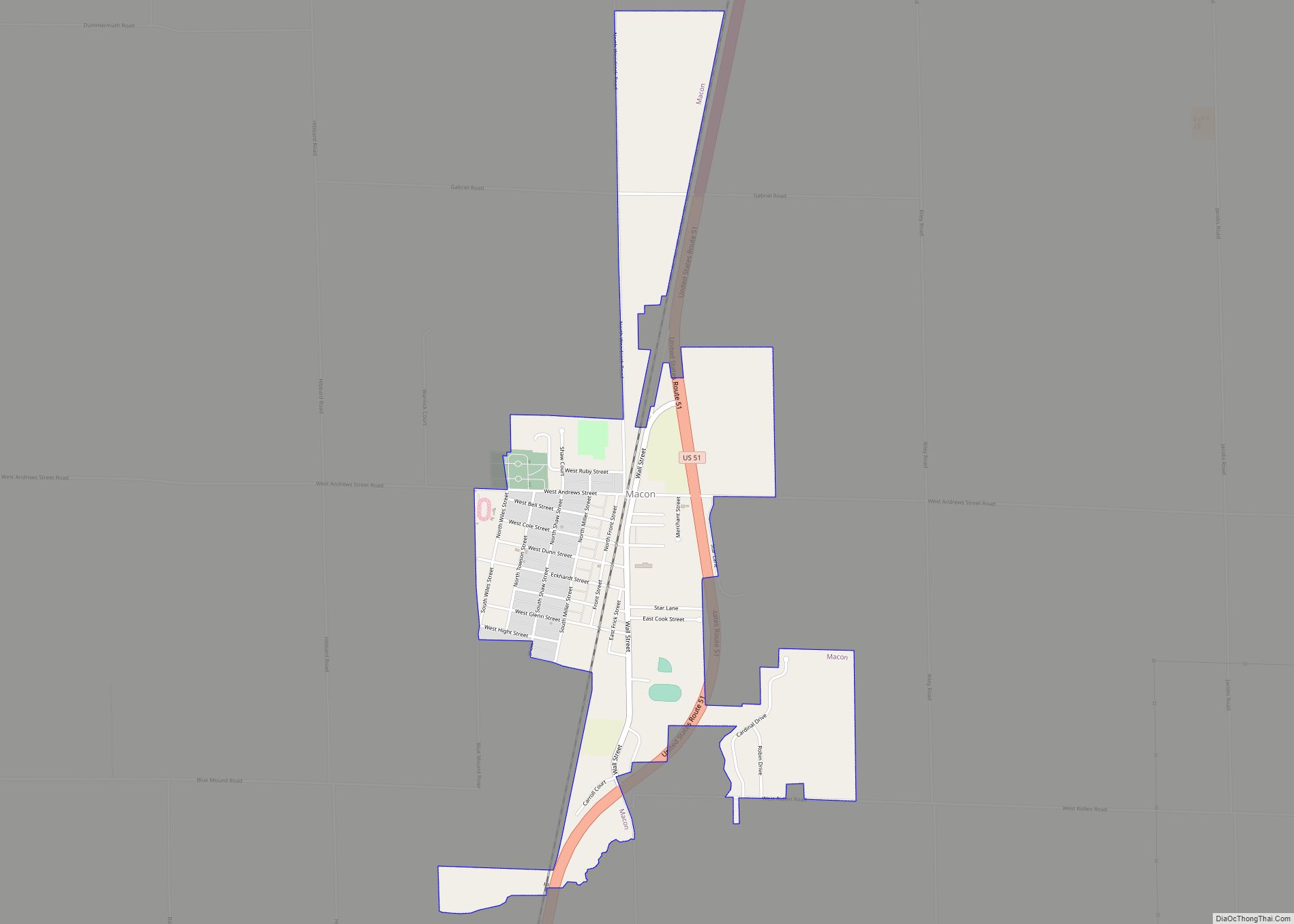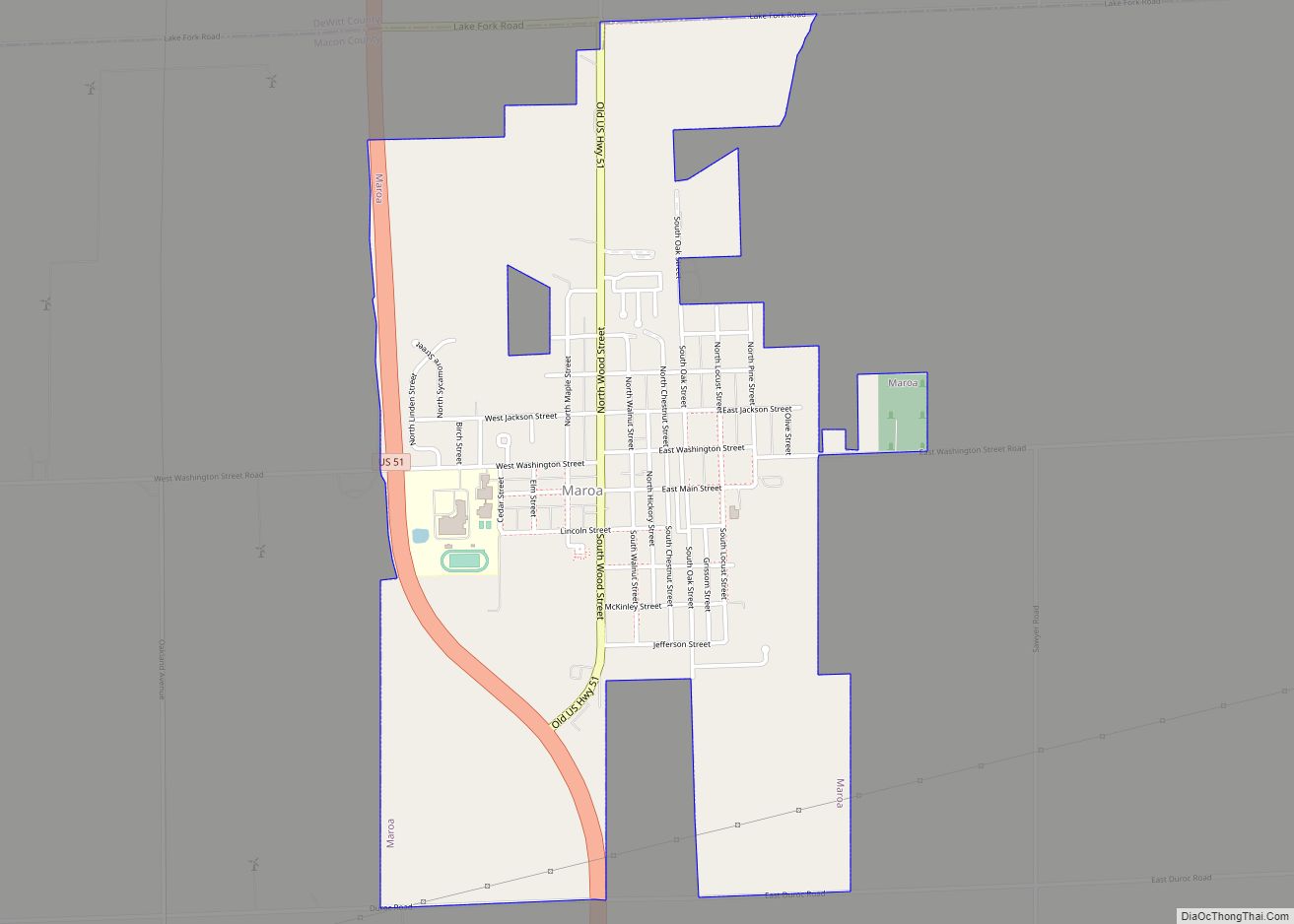Decatur (/dɪˈkeɪtər/ dih-KAY-tər) is the largest city and the county seat of Macon County in the U.S. state of Illinois, with a population of 70,522 as of the 2020 Census. The city was founded in 1829 and is situated along the Sangamon River and Lake Decatur in Central Illinois. Decatur is the seventeenth-most populous city in Illinois.
The city is home of private Millikin University and public Richland Community College. Decatur has an economy based on industrial and agricultural commodity processing and production, including the North American headquarters of agricultural conglomerate Archer Daniels Midland, international agribusiness Tate & Lyle’s largest corn-processing plant, and the designing and manufacturing facilities for Caterpillar Inc.’s wheel-tractor scrapers, compactors, large wheel loaders, mining class motor grader, off-highway trucks, and large mining trucks.
| Name: | Decatur city |
|---|---|
| LSAD Code: | 25 |
| LSAD Description: | city (suffix) |
| State: | Illinois |
| County: | Macon County |
| Founded: | 1823 |
| Elevation: | 677 ft (206 m) |
| Total Area: | 47.79 sq mi (123.78 km²) |
| Land Area: | 43.11 sq mi (111.65 km²) |
| Water Area: | 4.68 sq mi (12.13 km²) 10.0% |
| Total Population: | 70,522 |
| Population Density: | 1,500/sq mi (570/km²) |
| FIPS code: | 1718823 |
| Website: | www.decaturil.gov |
Online Interactive Map
Click on ![]() to view map in "full screen" mode.
to view map in "full screen" mode.
Decatur location map. Where is Decatur city?
History
The city is named after War of 1812 naval hero Stephen Decatur.
Decatur is an affiliate of the U.S. Main Street program, in conjunction with the National Trust for Historic Preservation.
The Potawatomi Trail of Death passed through here in 1838.
Post No. 1 of the Grand Army of the Republic was founded by Civil War veterans in Decatur on April 6, 1866.
The Edward P. Irving House, designed by Frank Lloyd Wright and built in 1911, is located at No. 2 Millikin Place, Decatur. In addition, the Robert Mueller Residence, 1 Millikin Place, and the Adolph Mueller Residence, 4 Millikin Place, have been attributed to Wright’s assistants Hermann V. von Holst and Marion Mahony.
Abraham Lincoln
Decatur was the first home in Illinois of Abraham Lincoln, who settled just west of Decatur with his family in 1830. At the age of 21, Lincoln gave his first political speech in Decatur about the importance of Sangamon River navigation that caught the attention of Illinois political leaders. As a lawyer on the 8th Judicial Circuit, Lincoln made frequent stops in Decatur, and argued five cases in the log courthouse that stood on the corner of Main & Main Streets. The original courthouse is now on the grounds of the Macon County Historical Museum on North Fork Road. John Hanks, first cousin of Abraham Lincoln, lived in Decatur.
On May 9 and 10, 1860, the Illinois Republican State Convention was held in Decatur. At this convention Lincoln received his first endorsement for President of the United States as “The Railsplitter Candidate”. In commemoration of Lincoln’s bicentennial, the Illinois Republican State Convention was held in Decatur at the Decatur Conference Center and Hotel on June 6 and 7, 2008.
ADM scandals and corporate exit
In early November 1992, the high-ranking Archer Daniels Midland Co. (ADM) executive Mark Whitacre confessed to an FBI agent that ADM executives, including Whitacre himself, had routinely met with competitors to fix the price of lysine, a food additive.
The lysine conspirators, including ADM, ultimately settled federal charges for more than $100 million. ADM also paid hundreds of millions of dollars ($400 million alone on the high-fructose corn syrup class action case) to plaintiffs and customers that it stole from during the price-fixing schemes. Furthermore, several Asian and European lysine and citric acid producers that conspired to fix prices with ADM paid criminal fines in the tens of millions of dollars to the U.S. government. Several executives, including the vice chairman of ADM, served federal prison time.
The investigation and prosecution of ADM and some of its executives has been reported to be one of the “best documented corporate crimes in American history”. The events were the basis of a book named The Informant, and a film by the same name.
In 2013, ADM reported that some employees had violated the Foreign Corrupt Practices Act, and ADM was fined 14 million U.S. dollars, but avoided criminal charges by self-reporting the foreign bribes.
In 2014, ADM moved its upper corporate management out of Decatur and established the new ADM World Headquarters in downtown Chicago. Following the ADM corporate exit, Decatur became listed by the United States Census Bureau as number 3 in “The 15 Fastest-Declining Large Cities” which showed a 7.1% population loss of (-5,376) from 2010 to 2019.
Consecutive tornadoes
On April 18 and 19, 1996, the city was hit by tornadoes. On April 18, an F1 tornado hit the city’s southeast side, followed by an F3 tornado the following evening on the northwest side. That same tornado then skipped twice hitting businesses on the northeast side. The two storms totaled approximately $10.5 million in property damage.
Railcar explosion
On July 19, 1974, a tanker car containing isobutane collided with a boxcar in the Norfolk & Western railroad yard in the East End of Decatur. The resulting explosion killed seven people, injured 349, and caused $18 million in property damage including extensive damage to nearby Lakeview High School.
Jesse Jackson protest
In November 1999, Decatur was brought into the national news when Jesse Jackson and the Rainbow/PUSH Coalition protested the two-year expulsion of seven African American students who had been involved in a serious fight at an Eisenhower High School football game under a recently enacted “zero tolerance” policy. Six of the students were arrested but not charged after the fracas. Four were later charged as adults with mob action, a felony. Jesse Jackson intervened in the incident, bringing the controversy to national attention, protesting both the severity and length of the punishment and also alleging racial bias (schools in Decatur in 1999 had an enrollment that was about 44 percent black and five of the six Decatur students expelled in the prior year were black). Jackson pointed out he was invited by the students’ parents and that he spoke with them, the kids, ministers and teachers before protesting the zero-tolerance severity of the punishment: “No one can survive zero tolerance,” Jackson said. “We all need mercy and grace.”
Outside of Decatur, public support was largely against the School Board’s decision but changed once a videotape of the incident surfaced filmed by a parent at the game. Broadcast on national TV news, it showed a melee that swept through one end of the grandstands, with kicking and punching, as some of the fighters tumbled over the rails. The game was stopped and players gawked at the fighting in the bleachers. Ed Bohem, the principal at MacArthur High School who attended the game, described it as a riot: “I feared for the safety of our people — my parents, my students,” Bohem said, referring to the crowd in the bleachers. “You had people pushed through bars, people covering little children so they wouldn’t get hurt. It was violent.” Jackson and his Rainbow PUSH Coalition organized marches that included hundreds of people bused in from outside the area, criticizing the school board for what Jackson said was unfairly harsh treatment of the boys over a fight. Jackson was arrested and detained briefly; however, charges were later dropped. School officials say the students involved in the fighting were known as truants, described three of them as “third-year freshmen”, and noted that the seven students combined had missed 350 days of high school.
The issue dissipated when the school board reduced the original expulsions from two years to one year and agreed to let the students earn credit while attending an alternative school.
The students involved in the fight have since taken different paths in life: with one being sentenced to state prison for 10 years for a 2004 felony drug conviction; another having finished college (helped by a Rainbow PUSH scholarship); another working as a butcher; and a fourth being arrested for home invasion in 2009. Jesse Jackson was criticized for turning what could have been a legitimate criticism/discussion of the effects of “zero tolerance” policies into national debate by attempting to present the seven youths as victims of bigotry.
Decatur Road Map
Decatur city Satellite Map
Geography
The USGS Domestic GeoNames resource has two listings for Decatur: “City of Decatur”, which is a Civil-class designation, and “Decatur”, which is a Populated Place designation, which have slightly different coordinate centroids: “City of Decatur” centroid is located at 39°51′20″N 88°56′01″W / 39.8556417°N 88.9337090°W / 39.8556417; -88.9337090, while the “Decatur” centroid is at 39°50′25″N 88°57′17″W / 39.8403147°N 88.9548001°W / 39.8403147; -88.9548001. Decatur is 150 miles southwest of Chicago, 40 miles east of Springfield, the state capital, and 110 miles northeast of St. Louis.
According to the 2010 census, consisted of 42.22 square miles (109.35 km) land and 4.69 square miles (12.15 km) of water, together amounting to a total area of 46.91 square miles (121.50 km), consisting of 90% land and 10% water. Lakes include Lake Decatur, an 11 km reservoir formed in 1923 by the damming of the Sangamon River, accounting for >90% of the state’s census-designated water area.
The Decatur Metropolitan Statistical Area (population 109,900) includes surrounding towns of Argenta, Boody, Blue Mound, Elwin, Forsyth, Harristown, Long Creek, Macon, Maroa, Mount Zion, Niantic, Oakley, Oreana, and Warrensburg.
Climate
See also
Map of Illinois State and its subdivision:- Adams
- Alexander
- Bond
- Boone
- Brown
- Bureau
- Calhoun
- Carroll
- Cass
- Champaign
- Christian
- Clark
- Clay
- Clinton
- Coles
- Cook
- Crawford
- Cumberland
- De Kalb
- De Witt
- Douglas
- Dupage
- Edgar
- Edwards
- Effingham
- Fayette
- Ford
- Franklin
- Fulton
- Gallatin
- Greene
- Grundy
- Hamilton
- Hancock
- Hardin
- Henderson
- Henry
- Iroquois
- Jackson
- Jasper
- Jefferson
- Jersey
- Jo Daviess
- Johnson
- Kane
- Kankakee
- Kendall
- Knox
- La Salle
- Lake
- Lake Michigan
- Lawrence
- Lee
- Livingston
- Logan
- Macon
- Macoupin
- Madison
- Marion
- Marshall
- Mason
- Massac
- McDonough
- McHenry
- McLean
- Menard
- Mercer
- Monroe
- Montgomery
- Morgan
- Moultrie
- Ogle
- Peoria
- Perry
- Piatt
- Pike
- Pope
- Pulaski
- Putnam
- Randolph
- Richland
- Rock Island
- Saint Clair
- Saline
- Sangamon
- Schuyler
- Scott
- Shelby
- Stark
- Stephenson
- Tazewell
- Union
- Vermilion
- Wabash
- Warren
- Washington
- Wayne
- White
- Whiteside
- Will
- Williamson
- Winnebago
- Woodford
- Alabama
- Alaska
- Arizona
- Arkansas
- California
- Colorado
- Connecticut
- Delaware
- District of Columbia
- Florida
- Georgia
- Hawaii
- Idaho
- Illinois
- Indiana
- Iowa
- Kansas
- Kentucky
- Louisiana
- Maine
- Maryland
- Massachusetts
- Michigan
- Minnesota
- Mississippi
- Missouri
- Montana
- Nebraska
- Nevada
- New Hampshire
- New Jersey
- New Mexico
- New York
- North Carolina
- North Dakota
- Ohio
- Oklahoma
- Oregon
- Pennsylvania
- Rhode Island
- South Carolina
- South Dakota
- Tennessee
- Texas
- Utah
- Vermont
- Virginia
- Washington
- West Virginia
- Wisconsin
- Wyoming
